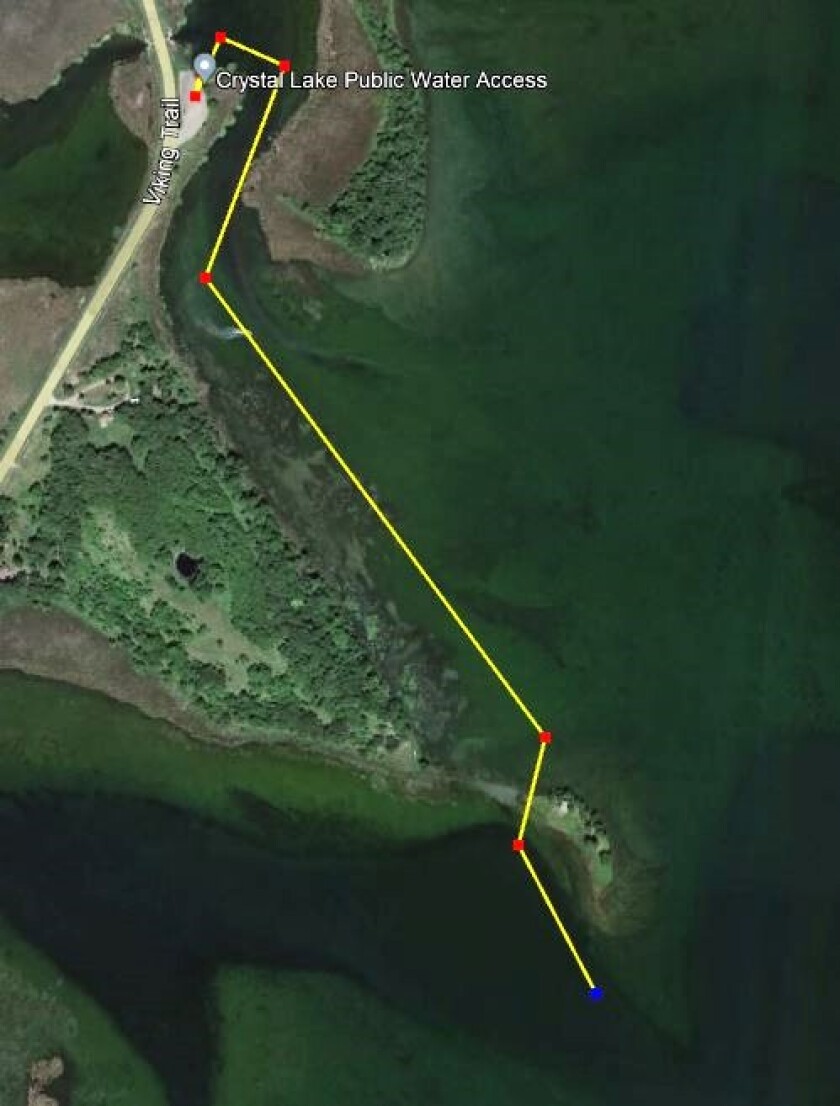DETROIT LAKES — in Detroit Lakes is having one of its busiest winters recovering items from the icy depths of area lakes. Since it opened in the early 1990s, owner Gary Thompson said he has averaged one ice recovery a week. This year, during Christmas week alone, he responded to seven calls. And the phone is still ringing.
“There was a four-wheeler on Middle Cormorant, a fish house on Little Cormorant, one on Dead Lake … and I have more calls today,” Thompson said.
ADVERTISEMENT
After a Christmas with rain instead of snow, the ice is in a dangerous state, despite its thickness in some areas. Thompson said the lakes he has ventured onto for recoveries had an average of 7 inches of ice.
The of 4 inches being safe for walking on ice; 5-7 inches for snowmobiles and small ATVs; and 7-8 inches for a side-by-side.
However, the warm weather and rain “chewed up the ice” and caused it to “honeycomb,” becoming structurally unsound in areas, Thompson said.
“Seven inches is still not strong enough to hold 2,000-pound fishing houses though,” he said.

When an item starts to sink, law enforcement is often notified. In Becker County, Recreational Enforcement Deputy Nicholas Daniel is one of the officers to survey the scene. If an item is sinking, he marks it with GPS to ensure it can be located and removed, should it find its way to the bottom of the lake.
“We give people 30 days to remove it from the ice,” Daniel said. “After 30 days, the sheriff’s office could remove it for them and bill them up to four times the cost of the removal.”
Removal costs assessed by Tri-State Diving depend on the item being recovered, the distance the crew has to travel and so forth. The most expensive recovery done by Tri-State Diving totaled $13,000 and was a two-day job.
ADVERTISEMENT
Daniel added if conditions are not safe for Tri-State Diving to retrieve an item, extensions can be given to the property owner to remove it from the bottom of the lake in the spring.
Department of Natural Resources Area Fisheries Supervisor Nathan Olson encouraged people to check ice thickness as they walk to their fishing hole.
“If it were me, I’d bring a heavy spud bar and slam it into the ice as I’m walking,” Olson said. “If it takes five whacks to get through, there are several inches of ice, but if it takes one whack then get out of there.”
He added ice thickness can be intermittent, with some areas showing several inches and other areas only a few inches.
“The season started out by setting people up for a good ice fishing season, but much has changed,” he said.
, which was two days later than average in the past 30 years. However, a string of above-freezing temperatures and rain have opened up some area lakes in the middle.

Olson encouraged ice fishermen to be prepared should they or someone else fall through. He noted that some new gear comes with a flotation device, but if that is not part of the attire, he suggested wearing a life jacket.
ADVERTISEMENT
“That might sound weird, but it will keep your head above water,” Olson said.
After the initial shock of an ice bath passes, ice picks can be a useful tool to pull oneself out of the water.
“Once you get yourself out, try to keep your weight distributed as widely as you can; roll from the hole or use the picks to get back to the thicker ice,” Olson said.
If another person is available to help, Olson said rope would be imperative. He recommended the helper lay on the ice to distribute their weight, and then throw the rope to the person in the water.
“Then pull the person back to safe ice,” Olson said.









